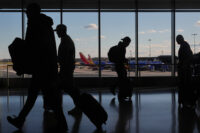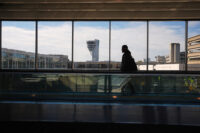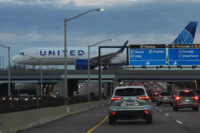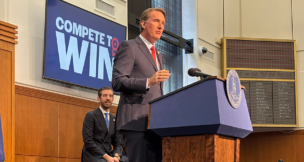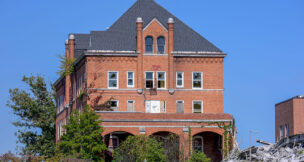FAA keeps flight cuts at 6% as shutdown ends
FAA holds flight reductions at 6% after more controllers return to work as Trump signs bill ending the record 43-day shutdown.
There’s no timeline on when flight cuts will ease up after the government shutdown ends
Airlines canceled over 9,000 U.S. flights after FAA cuts to ease pressure on short-staffed control towers during shutdown.
U.S. airlines cancel 1,000+ flights on first day of cuts tied to government shutdown
Anxious travelers across the U.S. felt a bit of relief Friday as airlines mostly stayed on schedule while cutting more than 1,000 flights because of the government shutdown.
US flight cancellations accelerate as airlines comply with government shutdown order
The FAA will cut air traffic by 10% at 40 major U.S. airports, including New York, L.A. and Chicago, amid the government shutdown.
FAA reducing air traffic by 10% across 40 ‘high-volume’ markets during government shutdown
The FAA will reduce U.S. air traffic by 10% starting Friday to maintain safety during the government shutdown as staffing shortages hit air control facilities.
Frontier Airlines launches flights from Richmond
Frontier Airlines begins nonstop flights from Richmond to Atlanta and Denver, offering introductory fares starting at $29.
Newark airport delays highlight air traffic controller crisis
Newark airport faces major delays amid controller shortages and failing radar systems. FAA plans tech upgrades and flight cuts to improve safety.
FAA plans radar, staffing fixes at Newark airport
The FAA will upgrade radar tech and staffing at Newark Airport after safety concerns and flight disruptions, with a broader U.S. air traffic overhaul ahead.
Homeland Security chief says travelers with no REAL ID can fly for now, but with likely extra steps
Travelers who aren’t REAL ID compliant by the upcoming deadline this week will still be able to fly but should be prepared for extra scrutiny, the head of Homeland Security said Tuesday.
Judge orders a June trial for US government’s felony case against Boeing
A federal judge in Texas has set a June trial date for the U.S. government’s years-old conspiracy case against Arlington County-headquartered Boeing for misleading regulators about the 737 Max jetliner before two of the planes crashed, killing 346 people. U.S. District Judge Reed O’Connor did not explain in the scheduling order he issued on Tuesday why he […]
Helicopters permanently restricted on route near Washington airport where 67 died in midair crash
WASHINGTON (AP) — Helicopters will be permanently restricted from flying near Washington, D.C.’s airport on the same route where a passenger jet and an Army helicopter collided in midair, killing 67 people, the Federal Aviation Administration said Friday. The move comes just days after federal investigators looking into the cause of the crash recommended a […]
Close calls at Washington DC airport raise questions about why changes weren’t made before crash
WASHINGTON (AP) — While Congress pushed ahead last year with adding 10 new daily flights to Washington, D.C.’s Reagan National Airport, many looked past concerns about dangers in the congested skies over the nation’s capital. Squeezing in more flights would only increase the risks, said Virginia’s two senators, who called a near miss between two […]



